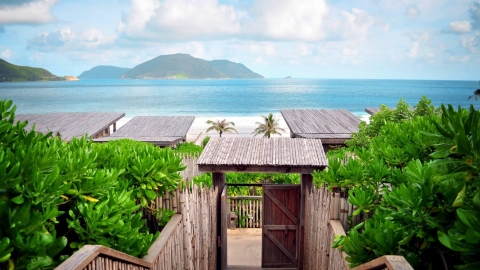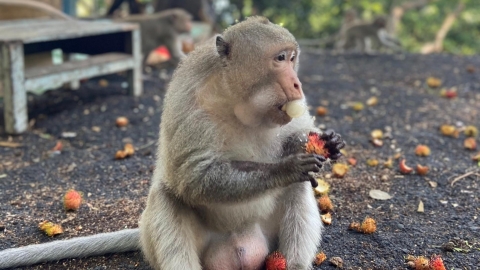Banh khot has long been one of the typical dishes of Vung Tau ward, Ho Chi Minh City (formerly Vung Tau city, Ba Ria - Vung Tau province). Along Hoang Hoa Tham street - known as Banh Khot street - there are many shops serving this dish. However, Banh Khot Cay Sung shop, located at number 19, is still the name that many people mention.
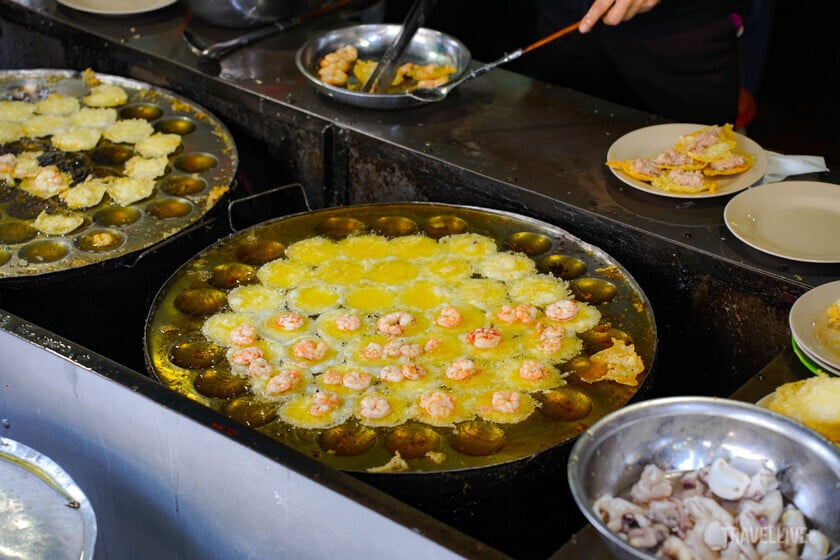
The banh khot pan at Cay Sung restaurant is almost always on fire all day because of the constant flow of customers.
Mr. Hung, 61 years old, the owner of the shop, said that this place has been open for nearly 30 years and has never moved. The name "Sung Tree" also came from a very simple detail: "In the past, there were two big fig trees in front of the door, so I named it that for easy remembering." Although the two trees were cut down a long time ago due to sidewalk re-planning, this name has remained with the shop for many years.
The restaurant opens from 9am to 9pm every day, but preparations are made early. Mr. Hung and his family members often go to the market at dawn to prepare and process ingredients before serving customers. The restaurant space is divided into many areas, with the kitchen located in a separate corner. Here, the banh khot pan is always red hot, emitting steam.
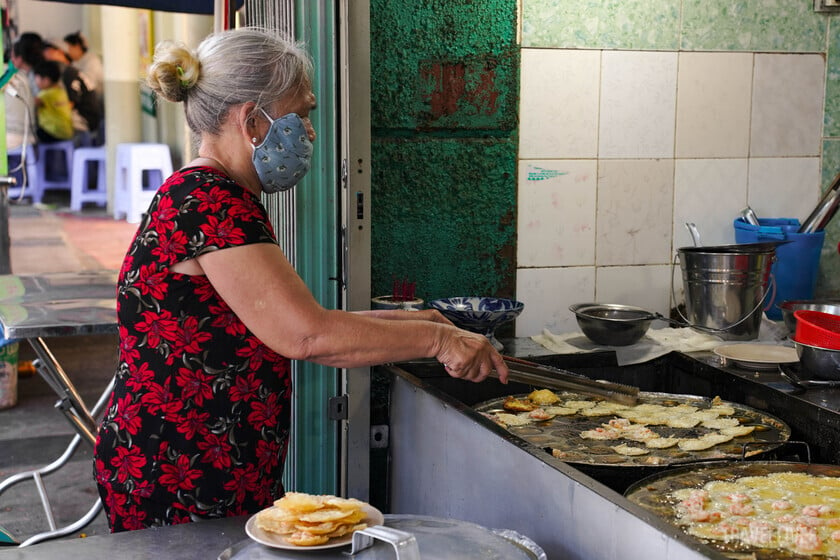
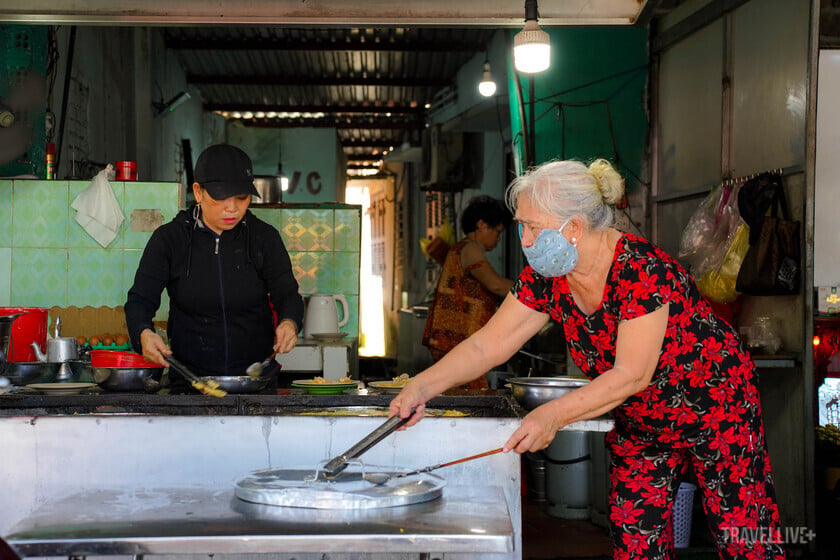
Nearly three decades later, the shop’s recipe remains the same as it was when it first opened. The crust is made from rice flour mixed with water and a little coconut milk. The ratio is adjusted so that the cake is neither too sticky nor too thick when baked. The batter is then spread evenly into deep molds, placed on a large pan filled with a large amount of cooking oil.
The shop currently has four main fillings: shrimp, squid, meat and oysters. The fillings are placed directly on the dough while the cake is cooking, helping the filling and crust blend evenly during the frying process. When the cake is golden brown and crispy, the chef will quickly take it out onto a plate, sprinkle some scallion oil on top to create a rich and characteristic aroma.
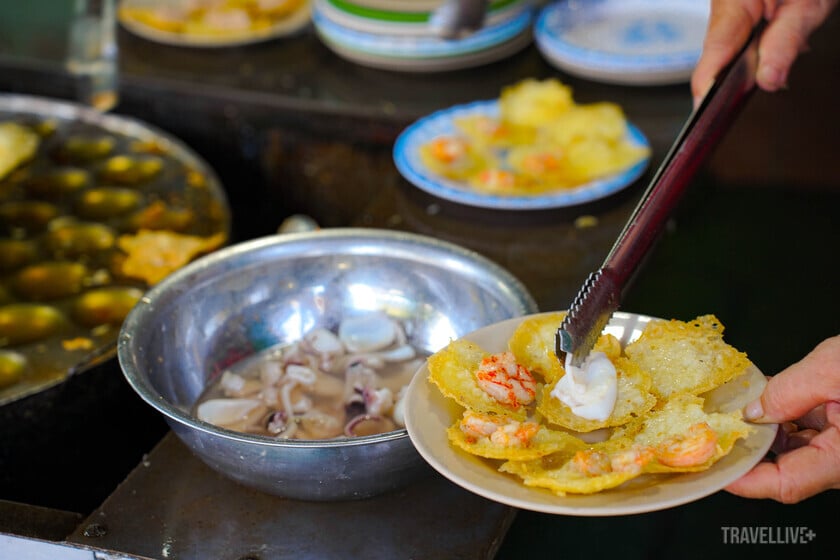

Various fillings of shrimp, squid, meat or oysters are placed on the crust, cooked to an attractive golden brown.
Mr. Hung said that in the past, in Vung Tau, people used to call it pouring banh khot. "Banh khot had to be poured with lard, wait for the tray to heat up, the lard melted, then spread evenly on the pan and pour the batter in," he said. However, this method is time-consuming, so nowadays people have switched to using cooking oil. Some restaurants even fry the cakes first, wait for customers to order, then fry them again until they are hot, making the cakes dry, crumbly, no longer moist, soft, and less delicious. As for his restaurant, the cakes are only made after customers order, so the waiting time may be longer, but the quality is always guaranteed.
A plate of banh khot here is always hot when brought out, you can clearly see the deep yellow color of the burnt crust. The cake is served with raw vegetables including lettuce, green cabbage, perilla, fish mint..., add some papaya, shredded carrots and a bowl of sweet and sour fish sauce. There is always chopped chili on the table for customers to adjust the spiciness to their taste.
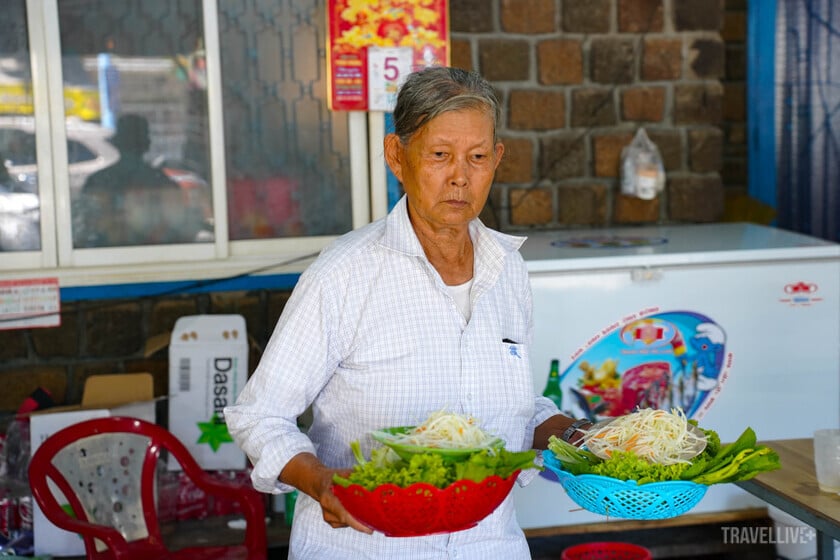
Side dishes are served first.
Each person enjoys Banh Khot differently. Some diners like to wrap the cake with vegetables in a green cabbage or lettuce leaf, roll it up, and dip it in fish sauce and chili. Others choose to dip the cake directly in fish sauce, eat it with vegetables but not roll it.
Regardless of the style, most diners appreciate the combination of crispy crust, soft filling and fresh taste of raw vegetables. This combination brings a feeling of multi-layered flavors: the fatty taste of scallion oil, the rich sweetness of shrimp and squid, the rich taste of oysters, the mild spicy taste of green mustard, the fresh taste of raw vegetables, helping diners not feel full even if they eat a lot.
A plate of mixed banh khot (banh khot) with 7 pieces costs 70,000 VND. In addition, the restaurant also sells porridge with shrimp, oysters, squid, and meat for 50,000 VND/bowl. Customers can order other drinks such as iced tea, sugarcane juice, and cold coconut to enjoy on hot days.


Many people choose to enjoy banh khot by rolling it with green cabbage or lettuce with herbs and dipping it in fish sauce and chili.
In addition to the food, the space of the restaurant is also a plus point. Opposite the restaurant is a row of old chò trees, around April and May, chò fruits fly down the street with the wind. Many diners like to sit at tables near the front to eat bánh khọt while watching the chò fruits fly - a unique scene that is not easy to find elsewhere.
The restaurant has now expanded two more service areas to accommodate the growing number of customers, especially during the summer tourist season. However, every noon, from around 11am to 2pm, the restaurant is often overloaded. “There are almost no empty tables on weekend afternoons,” Mr. Hung shared. The parking area in front of the restaurant is not large enough, so he often advises customers to go by taxi or tourist car, then call a car to pick them up when leaving to avoid the crowded scene of finding a parking space.
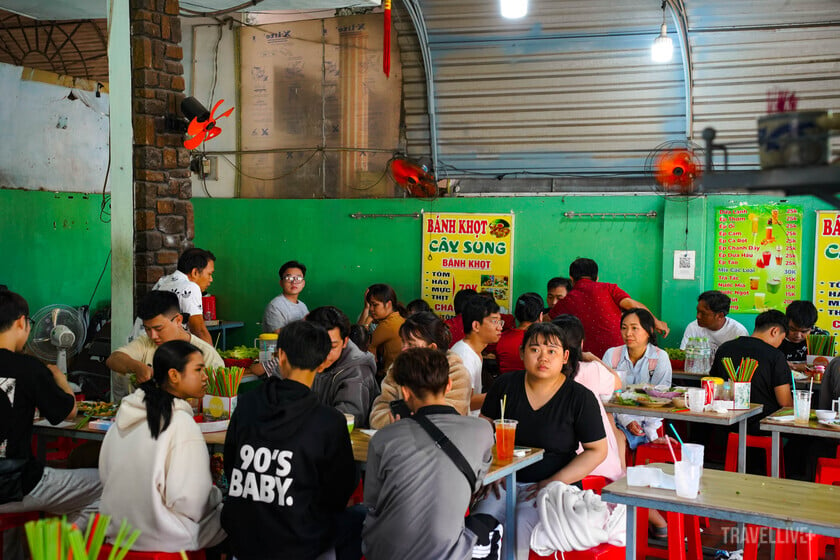
The restaurant is usually crowded at noon and on weekends.
Simple from the name to the style of service, but the Cay Sung pancake shop has still maintained its own position for nearly three decades. During that time, what keeps customers coming back is not only a well-flavored dish but also a familiar, rustic feeling, something that is sometimes rare in the increasingly hurried pace of life.




























